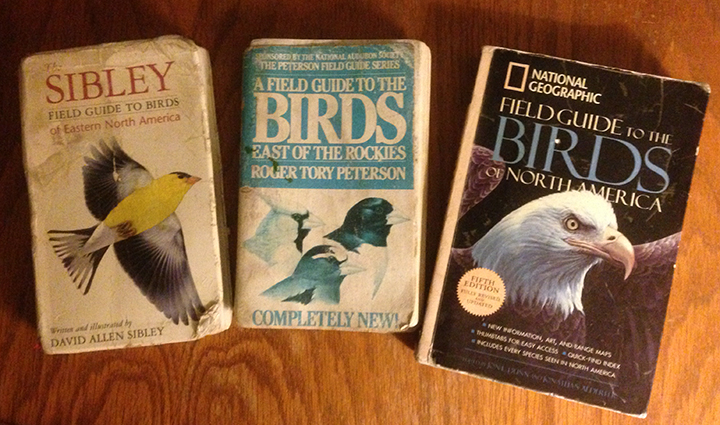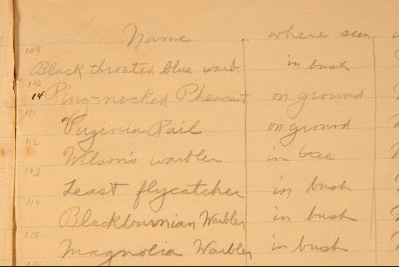We modern birders have been spoiled by Sibley. And Peterson. And NatGeo. And whatever other bird guide or app that you use. And today I’m thinking that maybe it’s not completely to our benefit. Imagine for a moment that you are a birder in 1999, a year before The Sibley Guide to Birds was published. Or better yet, in 1933, a year before The Peterson Guide to Birds of North America first saw the light of day. As a birder in those times, if you saw a bird, how would you identify it? If you were lucky, you would be birding with a mentor who has lots of experience, and they would share their accumulated knowledge of the birds that you were seeing and hearing. Or more likely, you would sketch an unfamiliar bird and take notes so that you could remember all the details of its plumage, structure, habitat, and behavior. In other words, you would have to make observations yourself, since there was no authoritative field guide to help.

That would be terrible, wouldn’t it? Well, today I’m not so sure. I have all of those books and a couple apps that are chock-full of information about all of the bird species found in North America, along with a smattering of guides depicting South America and Central America species. Yet here I am once again returning to my Sibley Guide and once again looking up something that I’ve looked up before. Let’s see…are the legs of a Piping Plover yellow or black? Is that a Common Tern or a Forster’s Tern? Do all adult Pileated Woodpeckers have that much red on the head, or is it just the males? And on and on. So what’s the problem? Why can’t I remember a bird after I’ve seen it? Either my memory is terrible, or I’m expecting myself to remember too many facts, or I’m trying to learn the wrong way. Yes, my memory is fading and I have high expectations of myself. But let’s consider for a moment the third possibility; that we are trying to learn birds in an inefficient way.
Let’s pause for a moment and look in the mirror. I suspect that we all have multiple field guides or apps to help us with identifying birds. But how do we use them? My experience is that very few birders even carry field guides into the field (think about the irony there!), and even fewer use them while birding. Novice birders tend to rely upon the experts in the group to tell them what birds they are seeing, and more advanced birders typically are trying to see as many species as they can, not learning more about the birds that they are seeing.
I’ll readily admit that the abundance of birding books and electronic resources can be extremely helpful; it’s empowering to have all the collective knowledge of any species at our fingertips. But is all of this information a learning tool or a crutch? There is a world of difference between having a book or app that contains information about birds and knowing those birds. Most of us need to develop habits that will help us to really see and remember the birds. In other words, we should be trying to learn the details of birds the way that Sibley learned them, by looking carefully at individual birds or groups of birds and asking questions. What are the distinguishing characteristics of this bird? How do I know what species this is? How can I distinguish it from any potentially confusing species? Are any secondary characteristics inconsistent with our identification? Does it have any distinctive behaviors? Is it an adult or an immature bird? Is it a male or a female? Is it molting or has it recently molted? If so, what is the molt pattern? Asking these types of questions will force you to look more closely at the bird, essentially teaching yourself. And if you can’t answer all of those questions for any bird, even the common ones, then watch it longer. You can try to rely upon your memory, but other options might help: take photos to analyze later, sketch the bird if you can, or write field notes of your own observations. At some point, look into your field guide while the bird is still there and see if there are any other traits that you might have missed.
So my advice for today: (1) slow down and observe the bird carefully, taking note of its structure, behavior, and plumage, and (2) bring your field guide with you and use it in the field, not afterward. The major point is to force yourself to look closely at the bird first, and not leave it to Sibley or Peterson or Nat Geo to do all the observations for you. Try this approach. Enjoy the process of learning the birds with your own observations, supplemented by the field guides, instead of rushing from bird to bird.
